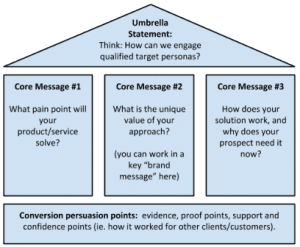News and Insights
How are you seen in the market?
July 6, 2022
When asked the question ‘how do you think you are perceived in the market?’ it is not uncommon to hear terms such as ‘industry leader, highest quality, best aftermarket service provider, innovator, technology leader’ and so on. Of course, this may well be the case, but can you be sure unless you have gone to the market directly to understand how your vision of perception reconciles with that of the outside world?
This exercise is a fundamental element of a messaging and positioning campaign – or phase one as we like to call it – and it can be an eye-opening approach. Feedback from customers and the media will give you a platform to build your messaging and positioning upon. The outside view can challenge perceptions and move you forward as a business, adding considerable value. Customers and the media tend to be brutally honest, and if something needs to be changed, it is on their feedback that change should be based.
Of course, it is also critical to understand how your competitors are positioning themselves and the language they are using to do so. Differentiation is key, and by conducting a thorough competitor analysis you can uncover exactly those areas that are missing and use them to your advantage.
Time and again throughout these exercises we see that the top five companies in an industry are essentially saying the same thing. By understanding this, expert consultants can advise on how to make you the standout business in the sector. Your ultimate value proposition lies in the intersection of your customers’ perception of your brand, industry ranking reflected in media opinions and your own USPs that are different from those of your competitors.
So how do we do this?
Well, following the research phase, we come to you for your valuable input, gathering people from within your organisation from all corners. We need to speak with the C-Suite, the marketing specialists, the people driving sales, the engineers, the R&D people, and often HR as well. Understanding internal perceptions is vital, as nine times out of 10 there are opposing views in a number of areas. Some may think the service offered is best-in-class, for example, while others may think there is room for improvement – that a competitor has the edge.
Questions are tailored to you as a business, but are geared towards perception, both internal and external, business goals, customer challenges, and what you hope to achieve from the exercise overall.
By opening up these debates, we are able to drill down into the facts to reach a consensus on the way forward in terms of how we present to the market. These discussions are key to everybody buying into the new approach, and whilst they can sometimes get lively, they always lead to an agreement. Again, we can steer the conversations towards points of differentiation, and we do, but the key here is that all involved across the business are confident that what we have agreed on is the correct strategy.
Next steps
Once the discussions have taken place, either in person as a roundtable or via video link, and the research is collated and analysed, we can then get to work on creating your messaging and positioning platform – or message house. This is a framework used to present the three core pillars of your approach to the market – elements such as technical expertise, sustainability, service capabilities, product development, for example – the foundation upon which your business sits, and also the umbrella statement or elevator pitch, often referred to as the roof. This can also incorporate a new tagline depending on whether the exercise is geared towards a rebranding, a refresh, or a new product launch, for example.
Below is an example of the message house structure.

Once signed off by all involved, the message house is sent to you and can be presented to the wider organisation for implementation. This can also be managed through an additional internal communications campaign to make sure there is the best chance of buy-in from those you are asking to make a change in approach. There are always many questions surrounding a new messaging and positioning project, particularly from salespeople who are being asked to approach customers in a different way.
How the new approach is outlined and delivered to them is all-important, and often requires a great deal of transparency in order to reassure those impacted that the move is designed to further the interests of the business, and therefore their career prospects and opportunities.
Following this, of course, is implementation of the messaging into your marketing and communications strategy. Everything identified and outlined in the message house must be put into operation across all points of contact – such as your website, social media channels, marketing and PR communications both in print and online and, importantly, when speaking with customers and prospects directly. It is following this implementation that the true value of differentiated messaging and positioning starts to make an impact. Interactions and share of voice in the media should increase, and customers and prospects will be presented with a fresh new approach to their challenges that should drive enquiries and ultimately sales.
Being the odd one out has historically been seen as something to be avoided, but where messaging and positioning is concerned, in a crowded marketplace where everyone is promoting the same values and services, it is exactly what you should aspire to be.
For more information on how Finn Partners can help you to stand out from the crowd in the manufacturing sectors you serve, contact Yulia Tribrat at yulia.tribrat@finnpartners.com
